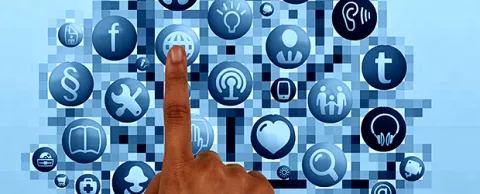
If I had to pick a single foundational word for smart cities, I might well pick “connectivity.” You can’t be a smart city without citywide connectivity for your devices and for your people.
How do you achieve that without breaking the bank? Here are four terrific approaches, two from North America, one from Europe and one from Asia. Two of them can actually MAKE money for a city.
So please… study these ideas. Mix and match. Add your own. Just be sure that your city is on the path to fast, broadband connectivity anywhere and everywhere in your city. Without that foundation, you cannot hope for the livability, workability and sustainability improvements promised by smart cities. — Jesse Berst
If your city’s connectivity is spotty or non-existent, consider borrowing ideas from these four cities that are finding unique ways to deliver it.
Seattle: Finding broadband in white space
The 12 million people who visit the Seattle Center each year now have access to super-fast Internet during their visit thanks to new technology from Council Lead Partner Microsoft that turns TV static into broadband.
The city had long provided free Wi-Fi there, but the access was slow — people could check their email, but not much more, and it would choke if too many people tried to do even that. Unused television spectrum, or white space, provided a dramatic leap in capacity, giving visitors all the data they need, even during large festivals and other events.
New York: Payphones to Wi-Fi
When was the last time you used a payphone? New York is replacing its old payphones with Wi-Fi hotspots and worked with Council Lead Partner Qualcomm to build the world’s largest and fastest municipal Wi-Fi network.
The first hotspots have gone online to rave reviews. The service they provide is typically about 20 times faster than the average Internet access in the city’s homes. Check out these reviews: LinkNYC Wi-Fi Hotspots Tested: They Crush Starbucks and LinkNYC's free gigabit WiFi is here, and it is glorious.
That’s the kind of publicity that attracts millennials and high-tech entrepreneurs. Want someone to be writing such things about your city? These particular hotspots more than pay for themselves (the kiosks are also digital billboards coveted by advertisers.)
Barcelona: Building two networks at once
Barcelona is a Wi-Fi pioneer, building one of the first public municipal Wi-Fi networks and one of the largest in Europe. It started because the city needed a wireless network for its parking meters and other devices. While it was laying the fiber for that, it figured it could add a public Wi-Fi network too.
The city says 100,000 people connect to one of the 700 Barcelona Wi-Fi hotspots each month. It’s not without its complaints. The service was designed in 2009 and the speeds it delivers are very slow by today’s standards. It’s also not available around-the-clock, leaving people out of luck if they’re looking for access after leaving a nightclub.
But if your city is already planning a private network to run sensors and other services, adding a public network could be a good incremental investment. That’s what they did in Chattanooga when the municipal utility needed better connectivity for its self-healing smart grid. The city used the same backbone to provide ultra-fast connectivity. Result? At last count, 2,800 new jobs and an addition $865 million to the local economy.
Seoul: Building on the Internet of Things
Seoul has been talking about citywide Wi-Fi in its public areas for years now, but is making a new push to have it by 2017, an effort driven by the Internet of Things. Smartphones can play a critical role in managing other devices. To do that, they need to be connected.
Seoul now says that by next year, it will have free Wi-Fi in every public place, including moving subways and buses. Once the network is in place, it plans to add services, including an integrated parking system by 2020.



